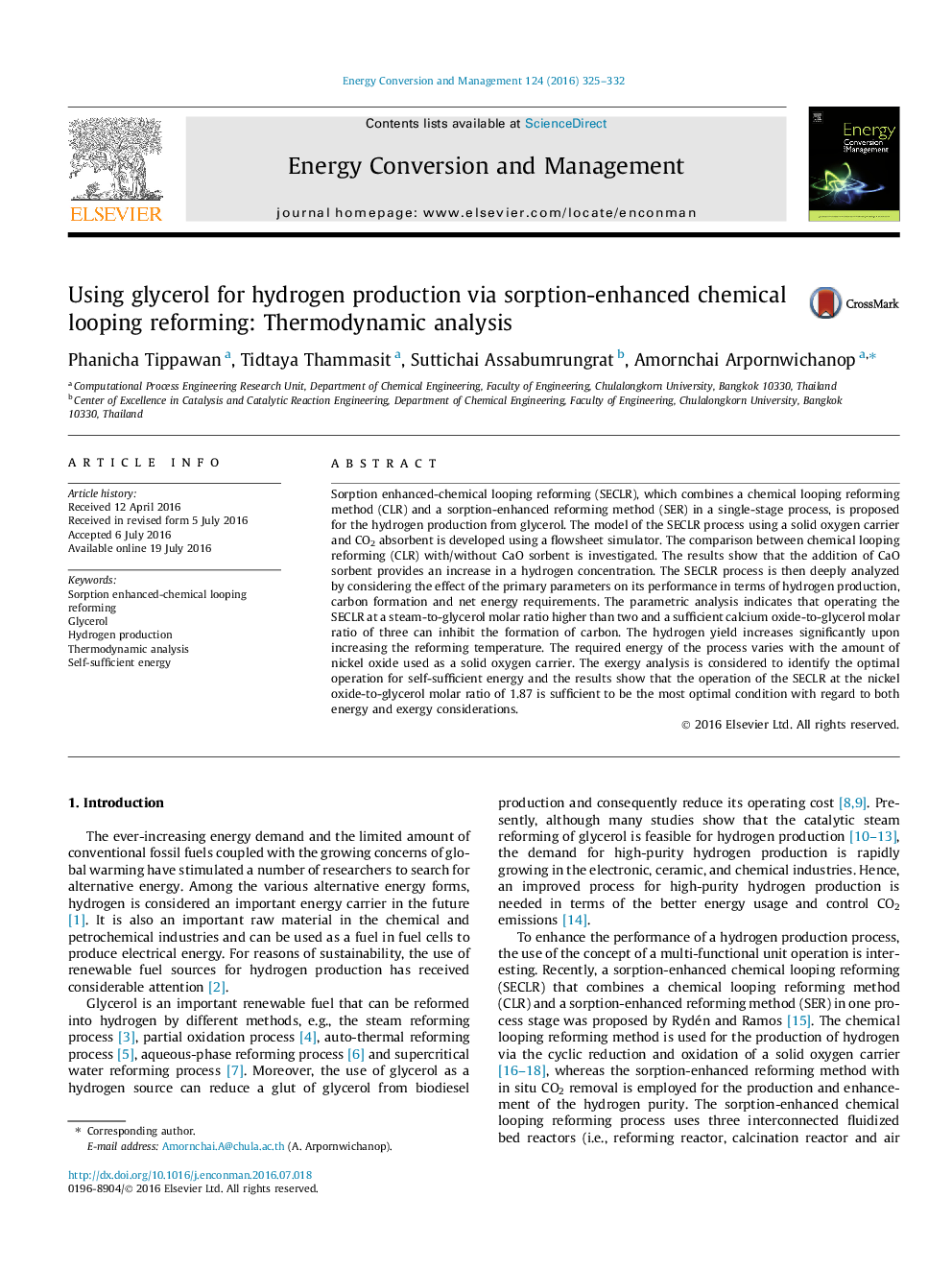| کد مقاله | کد نشریه | سال انتشار | مقاله انگلیسی | نسخه تمام متن |
|---|---|---|---|---|
| 764985 | 1462838 | 2016 | 8 صفحه PDF | دانلود رایگان |
• The sorption enhanced-chemical looping reforming process on glycerol is proposed.
• The comparison between chemical looping reforming with/without CaO sorbent is investigated.
• The parametric analysis of the proposed process is performed.
• A thermally self-sufficient condition without carbon formation appears in the operating window of the proposed process.
Sorption enhanced-chemical looping reforming (SECLR), which combines a chemical looping reforming method (CLR) and a sorption-enhanced reforming method (SER) in a single-stage process, is proposed for the hydrogen production from glycerol. The model of the SECLR process using a solid oxygen carrier and CO2 absorbent is developed using a flowsheet simulator. The comparison between chemical looping reforming (CLR) with/without CaO sorbent is investigated. The results show that the addition of CaO sorbent provides an increase in a hydrogen concentration. The SECLR process is then deeply analyzed by considering the effect of the primary parameters on its performance in terms of hydrogen production, carbon formation and net energy requirements. The parametric analysis indicates that operating the SECLR at a steam-to-glycerol molar ratio higher than two and a sufficient calcium oxide-to-glycerol molar ratio of three can inhibit the formation of carbon. The hydrogen yield increases significantly upon increasing the reforming temperature. The required energy of the process varies with the amount of nickel oxide used as a solid oxygen carrier. The exergy analysis is considered to identify the optimal operation for self-sufficient energy and the results show that the operation of the SECLR at the nickel oxide-to-glycerol molar ratio of 1.87 is sufficient to be the most optimal condition with regard to both energy and exergy considerations.
Journal: Energy Conversion and Management - Volume 124, 15 September 2016, Pages 325–332
